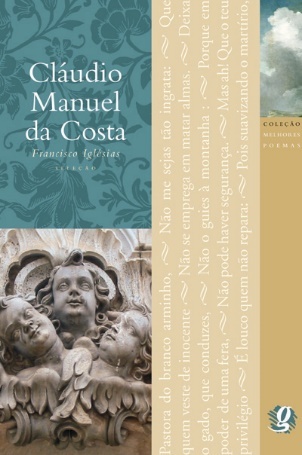You fixed form poems they are poetry of the lyrical genre. They always follow the same rule according to the amount of verses, stanzas and the rhyming scheme.
Types and Examples
To better understand this concept, below are the main fixed-form poems and some examples:
1. Sonnet
One of the best-known fixed-form poems is the sonnet. It was created in the 14th century and is composed of fourteen verses, two of which are quartets (set of four verses) and two are tercets (set of three verses). Below is an example by the Modernist writer Vinícius de Morais:
I won't eat the Petal Green Lettuce
Nor the faded wafers of carrots
I'll leave the pastures to the herds
And whoever would like to go on a diet.
I'll suck cashews, spade sleeves
Perhaps unfashionable for a poet
But pears and apples, I leave them to the aesthete
Who believes in salad chrome.
I wasn't born ruminant like oxen
Nor like rabbits, rodent; I was born
Omnivore: give me beans and rice
And a steak, and a strong cheese, and for
And I will die happy, from the heart
Of having lived without eating in vain.
2. trova
Also called “quadra” or “quadrinha”, the ballads are poems from a stanza that were created in the 13th century.
It represents a poetry of four heptasyllable verses (with 7 poetic syllables) that together form a stanza. Below is a piece by the Brazilian Parnassian writer Olavo Bilac:
"The love that you carry by your side
where does it lead you,
you enter covered in darkness
and get out covered in light?”
3. Ballad
Fixed-form poem composed of three octaves and a quatrain (or quintilla), usually of octosyllable verses (eight poetic syllables).
The ballad emerged in the 14th century in medieval France. Below is an example of a ballad by the French medieval writer François Villon:
Ladies ballad from bygone times
tell me what land or country
There is Flora, the beautiful Roman;
Where Archipiad or Thais,
who was her German cousin;
Echo, to imitate in the flowing water
of river or lake, the voice that touches it,
And of superhuman beauty?
But where are you, snows of yore?
And Heloise, the very wise and unhappy
by which it was enclosed
Pedro Abelardo in San Denis,
for your sacrificed love?
Where, likewise, the sovereign
That Buridan ordered to be put out
In a bag to the Seine thrown?
But where are you, snows of yore?
Branca, the queen, mother of Luís
That with a divine voice he sang;
Berta Pé-Grande, Alix, Beatriz
And the one that in Maine dominated;
And the good lorena Joana,
Burning in Rouen? Our Lady!
Where are they, Virgin sovereign?
But where are you, snows of yore?
Prince, see, the case is urgent:
Where they are, see him now;
May this refrain keep in mind:
Where are the snows of yore?
4. Rondo
Created in medieval France, the rondo is a fixed-form poem composed of three stanzas totaling thirteen lines, two of which form two squares, followed by a quintilla.
However, we must remember that it can appear in a varied way in terms of the amount of verses and stanzas. Thus, there are three types of Rondó: the French Rondo, the Double Rondo and the Portuguese Rondo.
Below is an example by the Brazilian writer Manuel Bandeira, consisting of five stanzas (23 verses: 4 quartets and 1 seventh):
Rondo dos Cavalinhos
The little horses running,
And we horsemen eating...
Your beauty, Emerald,
It ended up driving me crazy.
The little horses running,
And we horsemen eating...
the sun so bright outside
And in my soul — nightfall!
The little horses running,
And we horsemen eating...
Alfonso Reys leaving,
And so many people staying...
The little horses running,
And we horsemen eating...
Italy speaking thickly,
Europe screwing up...
The little horses running,
And we horsemen eating...
Brazil politicking,
Our! Poetry dying...
The sun so bright outside,
The sun so clear, Esmeralda,
And in my soul — nightfall!
5. sextina
The sextina is a fixed-form poem composed of six stanzas of six lines each (sextile) and a stanza of three lines (triplet). Below is an example of the Portuguese writer of Luís de Camões' classicism:
Little by little, the short life escapes me,
If by chance it's true that I'm still alive;
The brief time between my eyes is gone;
I cry for the past; and as I speak,
If my days go by step by step.
Finally, age is gone and it's worth it.
What a harsh way of pity!
For never has an hour seen such a long life
In which I can evil move a step.
What more rides for me to be dead than alive?
Wait, I cry, anyway? wait,
If I can't get away with my eyes?
O lovely gentle and clear eyes,
whose absence moves me so sorry
How much is not understood while I speak!
If, at the end of such a long and short life,
I would still ignite the living lightning from you,
By the way I would have all that step.
But I know that the extreme step first
He will close my sad eyes,
May love show me those I live for.
Witnesses will be ink and quill
What will they write from such an annoying life
The less I spent, and the more I talk.
Oh! that I don't know that I write or that I speak!
If you give a thought to another step,
I see such a sad way of life
That, if your eyes aren't worth so much,
I can't imagine what the penalty is
What a transfer of this sentence that I live with.
In my soul I have a live fire,
That if I didn't breathe in what I say,
The feather would already be grayed out;
But, about the greatest pain I suffer and I go
The tears in my eyes temper;
With that, fleeing, life does not end.
Dying I am in life, and in death alive;
I see without eyes, and without a tongue I speak;
And together I pass glory and pity.
6. haiku
Poem of Japanese origin created in the 16th century, the haiku are formed by three verses, and follow the structure below:
- first verse: presents 5 poetic syllables (pentasyllable)
- second verse: presents 7 poetic syllables (heptasyllable)
- third verse: presents 5 poetic syllables (pentasyllable)
Below is an example of the Brazilian writer Afrânio Peixoto:
Fashion Opinion
"I noticed a lily:
In fact, not even Solomon
It's so well dressed…”
To expand your knowledge on the topic, see also:
- Verse, Stanza and Rhyme
- Versification
- How to make a poem?


